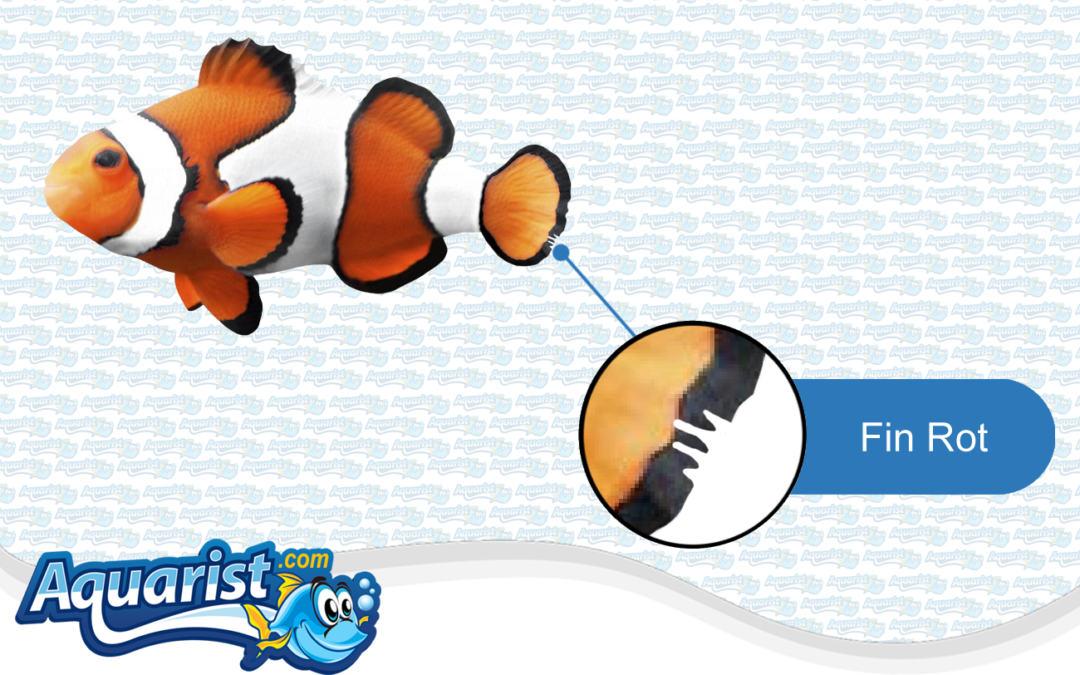Comprehensive Guide to Saltwater Fish Diseases: Fin Rot
Fin rot is a common and potentially serious disease in saltwater fish characterized by the degradation or erosion of the fins. It can be caused by bacterial or fungal infections, often resulting from poor water quality, stress, or physical injury. If left untreated, fin rot can lead to secondary infections, loss of the entire fin, and even death. This guide provides a detailed overview of fin rot, covering its causes, symptoms, treatment options, and preventive measures to help you manage and prevent this condition in your saltwater aquarium.
What is Fin Rot?
Fin rot is a condition where the fins of a fish become ragged, frayed, or disintegrated due to bacterial or fungal infections. It usually starts at the edges of the fins and gradually progresses toward the fin base, potentially spreading to the body in severe cases. The infection weakens the tissue, making it vulnerable to further damage and secondary infections.
Causes of Fin Rot
Fin rot can be triggered by several factors, including:
- Poor water quality: High levels of ammonia, nitrite, or nitrate can weaken the fish's immune system, making them more susceptible to infections.
- Physical injury: Fin damage caused by aggressive tank mates, sharp decorations, or rough handling can become infected, leading to fin rot.
- Stress: Environmental stressors, such as overcrowding, fluctuating water parameters, or sudden temperature changes, can increase susceptibility to disease.
- Bacterial infections: Pathogenic bacteria such as Aeromonas or Pseudomonas can invade damaged fin tissue, leading to infection.
- Fungal infections: In some cases, fungal growth may occur on the damaged fin tissue, exacerbating the condition.
Symptoms of Fin Rot
Recognizing the symptoms of fin rot early is essential for effective treatment. Common signs include:
- Frayed or ragged fin edges: The edges of the fins may appear torn, uneven, or shredded.
- Discoloration: The affected areas may turn white, black, brown, or red, depending on the severity of the infection.
- Fins becoming shorter: As the condition progresses, the fins may erode significantly, becoming noticeably shorter.
- Inflamed fin base: In severe cases, the area where the fin meets the body may become red and swollen.
- Lethargy and loss of appetite: Fish suffering from advanced fin rot may become less active and lose interest in feeding.
Treatment Options for Fin Rot
Treating fin rot involves addressing the underlying cause, improving water quality, and providing supportive care. The following steps can help manage and treat fin rot effectively:
- Improve water quality: Perform regular water changes and monitor water parameters to ensure that ammonia, nitrite, and nitrate levels are within safe ranges. Maintaining optimal water conditions is crucial for recovery.
- Use antibacterial or antifungal medications: Treat the affected fish with medications specifically designed to combat bacterial or fungal infections. Common options include antibiotics like erythromycin or antifungal treatments such as malachite green.
- Quarantine affected fish: If possible, move the infected fish to a quarantine tank for treatment. This helps prevent the spread of the infection and provides a controlled environment for recovery.
- Provide a nutritious diet: Offer a balanced diet with high-quality foods to support the fish's immune system. Vitamin supplements can also aid in the healing process.
- Remove stress factors: Minimize stress by ensuring that the tank environment is stable, avoiding aggressive tank mates, and providing hiding places to make the fish feel secure.
Preventing Fin Rot
Prevention is the best approach to managing fin rot in saltwater fish. The following steps can help reduce the risk of this condition:
- Maintain optimal water quality: Regularly test and monitor water parameters, including pH, ammonia, nitrite, and nitrate levels. Perform routine water changes to keep the tank clean and healthy.
- Avoid overcrowding: Keep the stocking levels appropriate for the size of the aquarium to reduce stress and aggression among tank mates.
- Provide a safe tank environment: Remove sharp or rough decorations that could cause injury, and ensure that the tank is spacious enough for all fish to swim freely.
- Quarantine new fish: Quarantine new arrivals for at least 2-4 weeks before introducing them to the main tank. This helps prevent the introduction of diseases and infections.
- Feed a balanced diet: Provide a varied diet that includes high-quality foods and vitamin supplements to boost the immune system and promote overall health.
Pro Tips for Treating and Preventing Fin Rot
- Act quickly: Early intervention can prevent minor fin damage from developing into severe fin rot. Treat symptoms as soon as they appear.
- Monitor water quality closely: Poor water conditions can exacerbate fin rot. Regularly check water parameters and make adjustments as needed.
- Use natural healing aids: Products like Melafix (made from tea tree oil) can be used as a natural remedy to support healing and reduce inflammation.
- Disinfect equipment: After treating infected fish, thoroughly clean and disinfect any equipment used, such as nets, buckets, or siphons, to prevent the spread of pathogens.
Common Mistakes to Avoid When Treating Fin Rot
To ensure effective treatment and avoid complications, be mindful of these common mistakes:
- Stopping treatment too early: Even if the symptoms improve, continue the full course of treatment to ensure the infection is fully eradicated.
- Overusing medications: Avoid using multiple treatments simultaneously without guidance, as this can stress the fish and negatively impact water quality.
- Not addressing the root cause: Simply treating the symptoms without addressing poor water quality, aggressive tank mates, or other stress factors will likely result in recurrence.
- Skipping quarantine for new fish: Introducing new fish without quarantine can introduce pathogens into the main tank, leading to outbreaks of fin rot.
Understanding the Impact of Fin Rot on Fish Health
Fin rot can significantly affect the health and well-being of saltwater fish. If left untreated, it can progress to a point where the fins are completely eroded, leading to secondary infections and systemic illness. Maintaining a clean tank environment, providing a nutritious diet, and addressing underlying stressors are essential for preventing and treating this condition. With proper care and timely intervention, most fish can recover fully from fin rot.
Conclusion
Fin rot is a common but preventable condition in saltwater fish that can be managed effectively with prompt attention and the right care. By recognizing the symptoms, understanding the causes, and taking appropriate treatment and preventive measures, you can help ensure the health and well-being of your fish. Maintaining optimal water quality, providing a safe tank environment, and quarantining new fish are key steps in preventing fin rot. With proper care, you can keep your saltwater aquarium thriving and your fish healthy.

